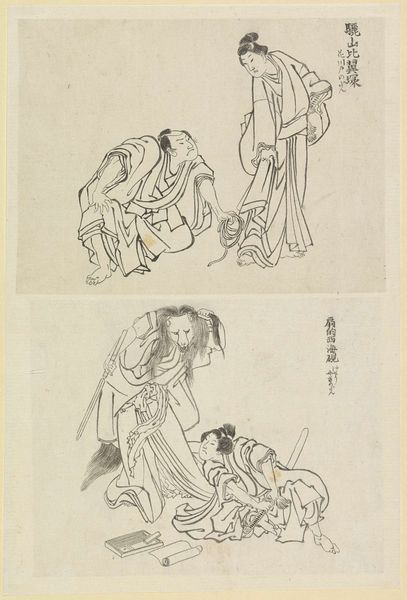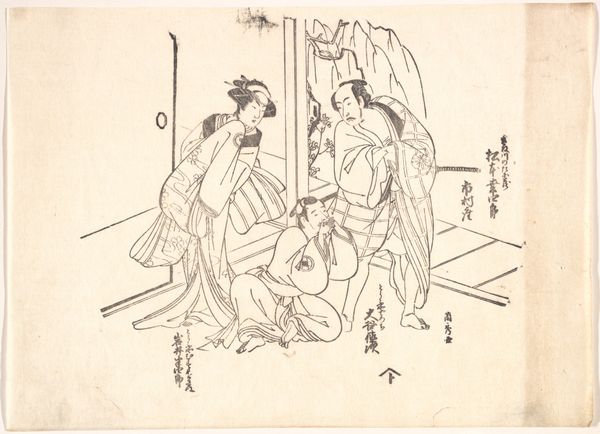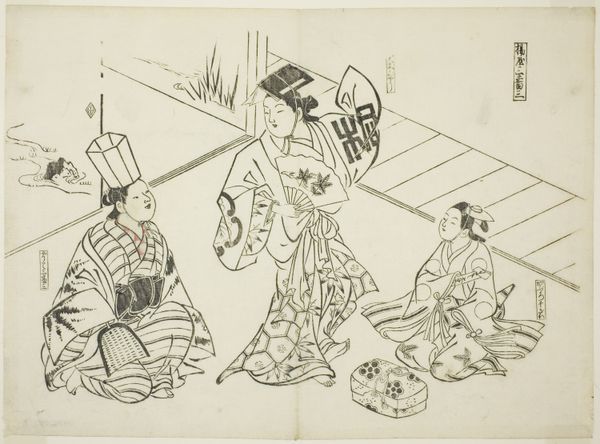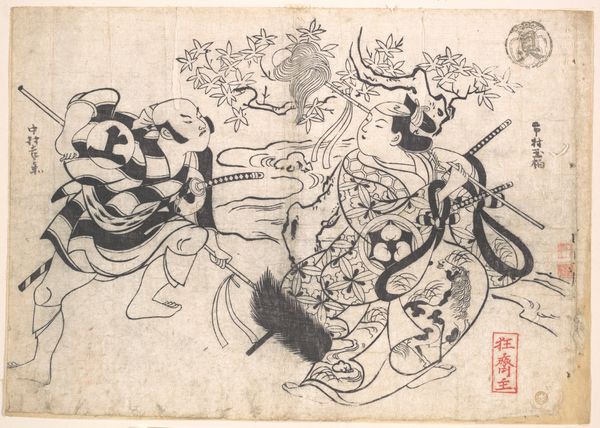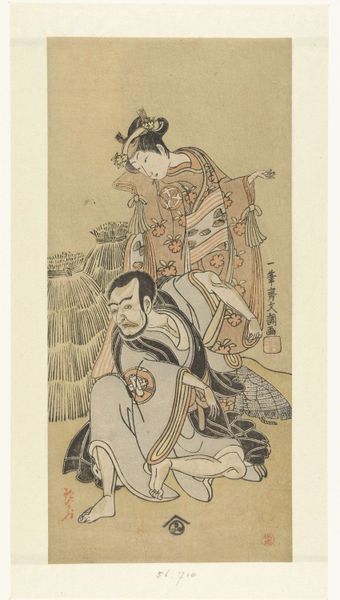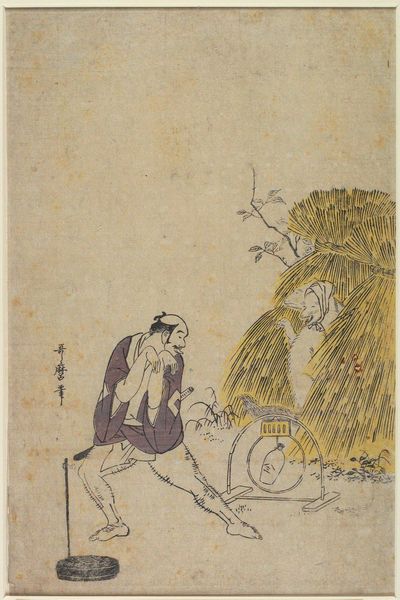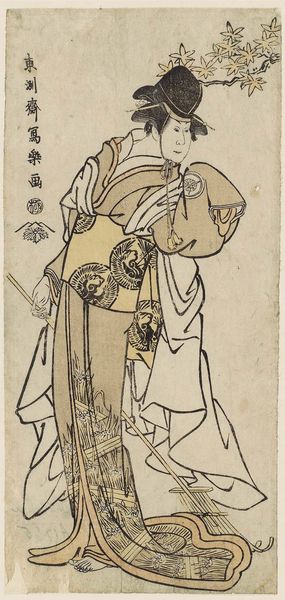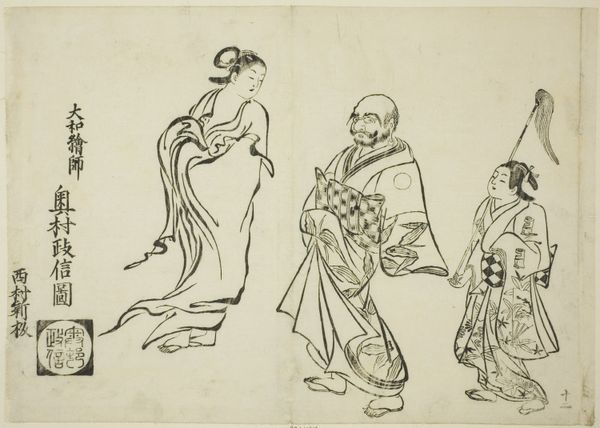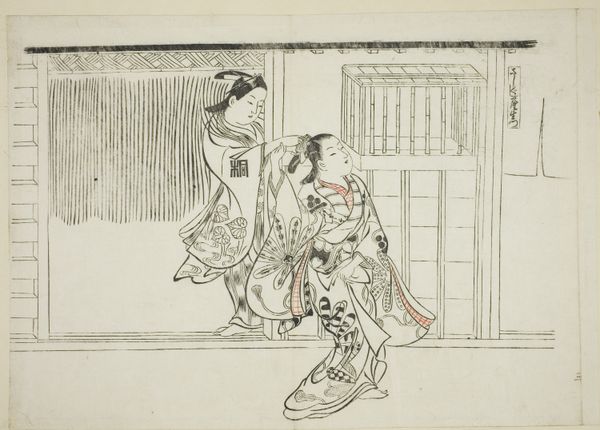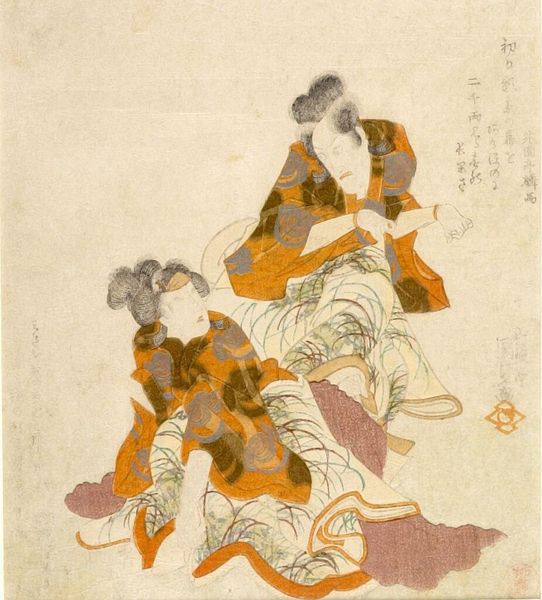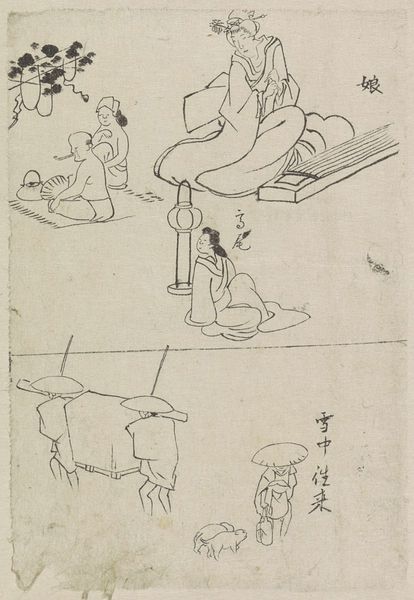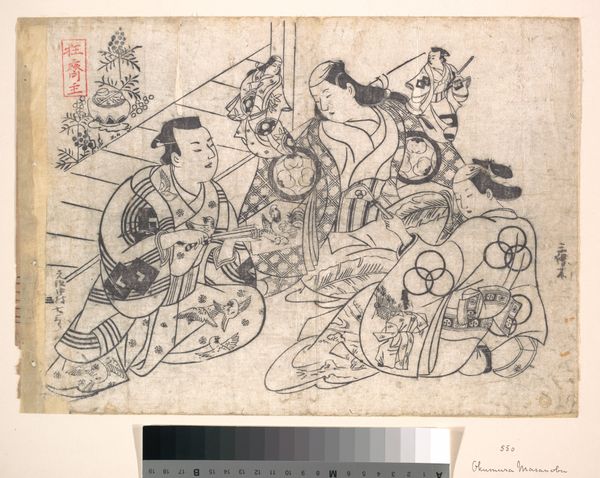
Twee toneelscènes, een met twee samoerai en een met twee figuren bij een tafel 1800 - 1900
0:00
0:00
drawing, ink
#
drawing
#
narrative-art
#
asian-art
#
ukiyo-e
#
figuration
#
ink
#
line
Dimensions: height 285 mm, width 198 mm, height 135 mm, width 180 mm
Copyright: Rijks Museum: Open Domain
These two theatrical scenes were created by Katsushika Hokusai, sometime before his death in 1849. Made with ink on paper, the scenes show a sketch-like quality that is integral to the art form of Ukiyo-e. Hokusai made his name producing woodblock prints and paintings of the everyday life of the Edo period, during which time Japan opened itself up to trade with the rest of the world. This aesthetic is a critical element of Hokusai's work, in which lines define space, color, and the figures depicted. Hokusai's approach combines skilled artistry, traditional techniques, and his own innovative expression of cultural norms, in addition to the demands of commerce and the tastes of his audience. The social context of the Edo period deeply informs Hokusai's artistic expression, and the prints themselves would have been made using the labor of woodblock carvers and printers. We can see that the techniques and the amount of work involved are tied to wider social issues of labor, politics, and consumption. By examining the materials, processes, and social context, we gain a more complete understanding of these theatrical scenes and their meaning.
Comments
No comments
Be the first to comment and join the conversation on the ultimate creative platform.
